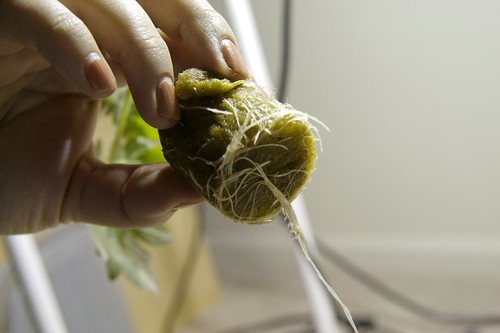
Photo: Carly at Neponset Watershed
All garden crops such as beans, tomatoes, bananas, lettuce, okra, eggplant and taro are grown intensively within the city using only organic farming methods since these are the only methods permitted in the urban parts of Havana. No chemicals are used in 68 percent of Cuban corn, 96 percent of cassava, 72 percent of coffee and 40 percent of bananas. Between 1998 and 2001, chemicals were reduced by 60 percent in potatoes, 89 percent in tomatoes, 28 percent in onion and 43 percent in tobacco.
In Venezuela, the socialist government of Hugo Chavez is trying to introduce urban agriculture to the populace. In Caracas, the government has launched Organoponico Bolivar I, a pilot program to bring organopónicos to Venezuela. Urban agriculture has not been embraced in Caracas as it has in Cuba. Unlike Cuba, where organopónicos arose from the bottom-up out of necessity, the Venezuelan organopónicos are clearly a top-down initiative based on Cuba's success.
Another problem for urban agriculture in Venezuelan is the high amounts of pollution in major Venezuelan urban areas. At the Organoponico Bolivar I, a technician comes every 15 days to take a reading from the small pollution meter in the middle of the garden.

Photo: Tavallai
It's important to acknowledge that Cuba's organopónicos are not entirely replicable in other countries. Cuba remains a state-dominated society with a high degree of social control. The question is whether a more liberal society without that kind of central command structure would be able to respond as effectively to a sudden breakdown in the food system.














